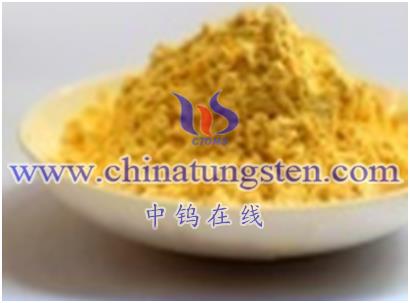Tungsten oxide (WO₃) can participate in redox reactions, a class of chemical reactions involving the oxidation and reduction of substances.
In redox reactions, tungsten oxide can act as both an oxidizing agent and a reducing agent. As an oxidizing agent, tungsten oxide can accept electrons and deprive electrons from other substances, causing other substances to undergo oxidation reactions. As a reducing agent, tungsten oxide can provide electrons to other substances for reduction reactions. For example, in the redox reaction in which tungsten oxide participates, when it reacts with a certain substance, tungsten oxide will accept the electrons of the substance, thereby reducing itself. At the same time, tungsten oxide oxidizes the substance, oxidizing it to a higher oxidation state. This redox reaction plays an important role in many chemical processes, including catalytic reactions, electrochemical reactions, and energy conversion. Tungsten oxide acts as an oxidizing agent and a reducing agent, which can promote electron transfer, oxidative conversion and energy conversion processes in these reactions. The specific redox properties of tungsten oxide depend on its oxidation state and reaction conditions. Tungsten oxides in different oxidation states may exhibit different activities and reactivity in redox reactions. In addition, reaction conditions (such as temperature, pressure, and solution pH, etc.) will also affect the redox reaction. To sum up, tungsten oxide can participate in the redox reaction, and participate in electron transfer and oxidation transformation process as oxidizing agent and reducing agent. This redox property makes tungsten oxide a potential for a wide range of applications in the fields of catalysis, electrochemistry, and energy.

More details of tungsten oxide product, please visit website: tungsten-oxide.com
Please contact CHINATUNGSTEN for inquiry and order of tungsten oxide:
Email: sales@chinatungsten.com
Tel.: 86 592 5129595






